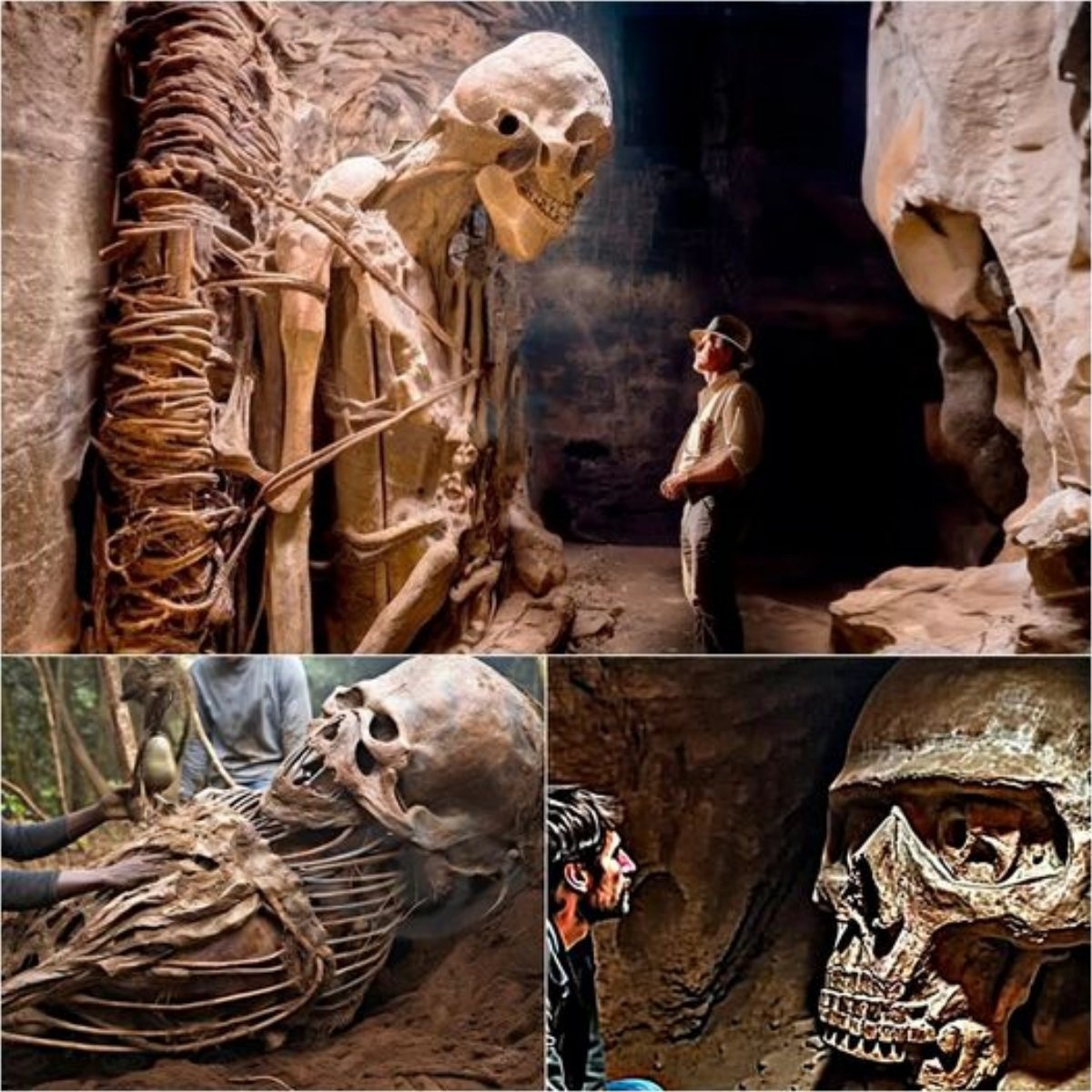A recent discovery beneath the Grand Canyon has sent shockwaves through the archaeological community: massive, ancient skeletons believed to be the remains of giants. These colossal skeletons, buried deep within the canyon’s remote caverns, have reignited debates about the existence of giant humanoids in prehistoric times, a topic often relegated to the realm of myth and legend.
The expedition that led to this discovery was initially focused on uncovering evidence of early human activity in the Grand Canyon region, an area long known for its ancient Native American heritage and geological wonders. However, as the team delved deeper into the canyon’s hidden cave systems, they stumbled upon something far more extraordinary. The skeletal remains were unlike anything they had seen before, towering in stature, with some bones measuring several feet in length. The largest skeleton was estimated to belong to a humanoid that would have stood between 10 and 15 feet tall.

Preliminary analysis of the bones suggests that these giant beings could have lived thousands of years ago, long before the Grand Canyon was widely inhabited by early Native American tribes. The discovery poses a series of intriguing questions: Who were these giants? Did they coexist with early humans? And how did they come to be buried so deeply within the canyon?
The site itself is located in a remote and nearly inaccessible part of the canyon, a series of deep caves that have been untouched by modern civilization. Alongside the skeletons, archaeologists found tools and artifacts that hint at a sophisticated culture. Large stone tools, far too big for normal human use, and ceremonial items suggest that these giants may have had their own rituals and societal structures. There were also remnants of what could have been primitive dwellings or ceremonial chambers.

The local Native American tribes have long held legends about a race of giants that once walked the earth. These giants, according to oral traditions, were beings of great strength and intelligence, often feared or revered by their human neighbors. Some stories describe them as protectors of the land, while others portray them as dangerous adversaries who met their demise after warring with humans. The discovery of the giant skeletons has lent new credibility to these age-old tales, giving rise to the possibility that the legends were based on real encounters with a now-extinct species.
As archaeologists continue to excavate and study the site, scientists are working to determine the age and origin of the skeletons using advanced dating techniques. Early estimates suggest that the bones could be at least several thousand years old, but more precise data will be required to understand the full timeline of their existence. Genetic testing is also being considered to see if these giants share any connection to known human species or if they represent an entirely different branch of the evolutionary tree.

The discovery of giant skeletons in the Grand Canyon has captured the world’s imagination, evoking both wonder and skepticism. While some see it as definitive proof that giants once roamed the Earth, others caution that further study is needed before jumping to conclusions. Whatever the outcome, this find has sparked renewed interest in the mysteries of human history and the possibility that much of our past remains buried, waiting to be unearthed.
For now, the Grand Canyon holds onto its secrets, with only fragments of the story revealed. As archaeologists and historians delve deeper into the mystery, one thing is certain: this discovery could change our understanding of prehistory and the creatures that once called this planet home. The enormous skeletons lurking beneath the Grand Canyon may finally bring to light the truth behind the ancient legends of giants.
